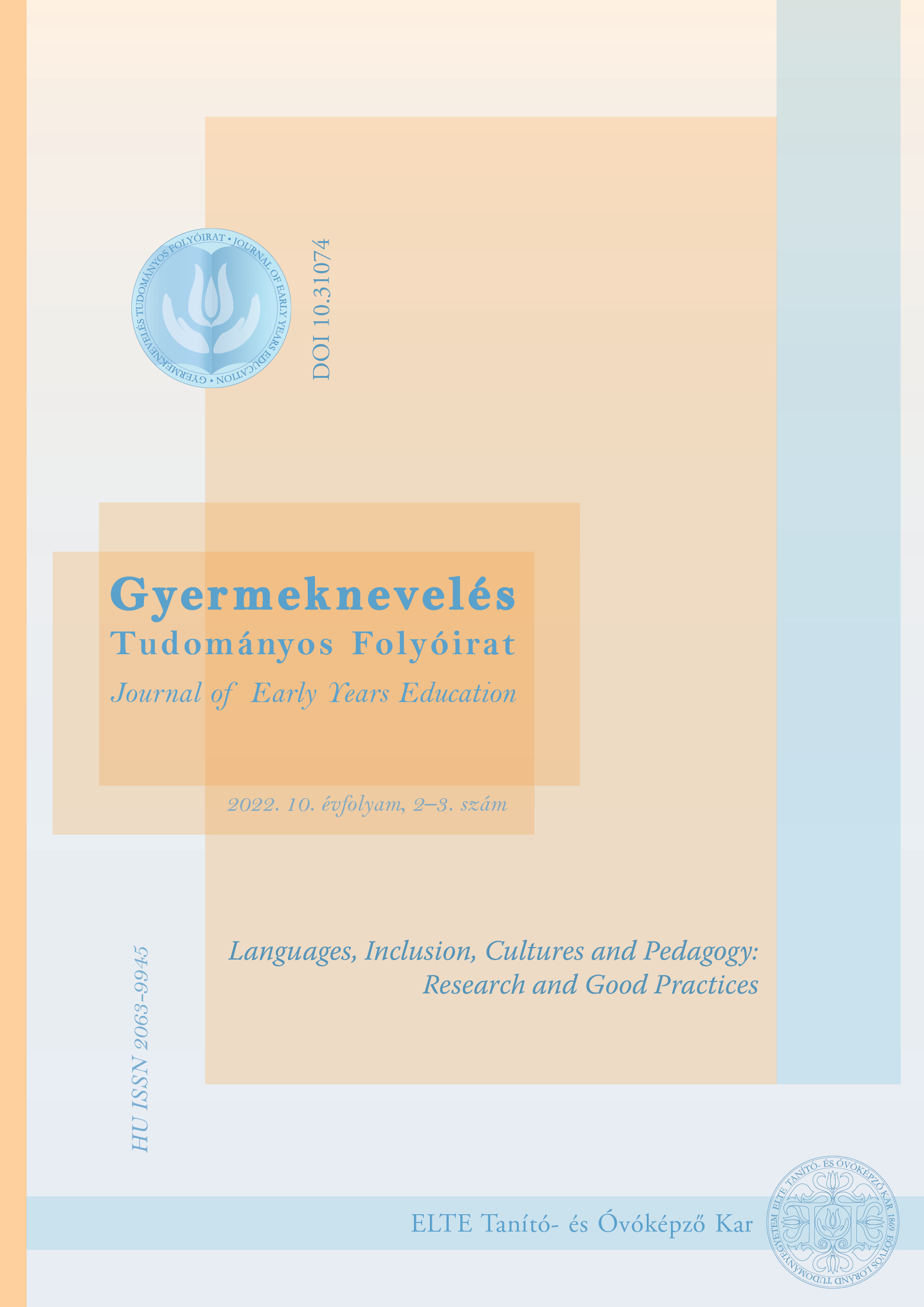Integration practices
DOI:
https://doi.org/10.31074/gyntf.2022.3.36.47Kulcsszavak:
disadvantage, special attention, inclusion, good practices, learning supportAbsztrakt
The pedagogical practice of acceptance paves the way to integrating those disadvantageous children who can only live their daily lives with support and would experience a learning process full of failures without the proper aid. Societal expectations and social integration can only meet successfully when the spirit of educational institutions and the attitude of teachers demonstrate an accepting attitude. The structure of the institution must furthermore undergo a transformation. When good practices are included in institutional regulatory documents and efforts are made to comply with them, i.e., the institution adapts to the individual needs of the child, then inclusion can be said to occur. Ensuring the conditions necessary for inclusion is a major challenge for the teaching community. Many creative initiatives launched for the purpose of implementing integration demonstrate that the harmonious cooperation of teachers, parents, and children is essential in the process. An example of such an initiative can be found in the second phase of our sensitising series.
Letöltések
Hivatkozások
References
Bajtosova, P. (2019). Roma integration programmes can actually make a real difference. POLITHEOR. European Policy Network. https://politheor.net/roma-integration-programmes-can-actually-make-a-real-difference/
Pankotai, F. & Hegedűs. R. (2019). Roma/Cigány óvodáskorú gyermekek integrációja három hátrányos helyzetű óvodában a szülőkkel való együttműködés alapján. In Vargáné Nagy, A. (Ed.), Családi nevelés: Hátránykompenzációs kiadvány (pp. 54–67). Forstag Nonprofit Közhasznú Kft. https://www.researchgate.net/publication/339787928_Romacigany_ovodas_koru_gyermekek_integracioja_harom_hatranyos_helyzetu_ovodaban_a_szulokkel_valo_egyuttmukodes_alapjan
European Commission (2020). EU Roma strategic framework for equality, inclusion and participation for 2020-2030. Brussels. https://ec.europa.eu/info/sites/info/files/eu_roma_strategic_framework_for_equality_inclusion_and_participation_for_2020_-_2030_0.pdf, https://ec.europa.eu/info/policies/justice-and-fundamental-rights/combatting-discrimination/roma-eu/roma-equality-inclusion-and-participation-eu_en#eu-roma-strategic-framework-for-equality-inclusion-and-participation, https://ec.europa.eu/regional_policy/en/policy/themes/social-inclusion/roma-pilot/
Resources
European Commission (2011). Europe includes us all. The Roma Pilot Project. https://ec.europa.eu/regional_policy/sources/docgener/presenta/roma_pilot_2011.pdf
European Commission (2010). Improving the tools for the social inclusion and non-discrimination of Roma in the EU. Summary and selected projects. Luxembourg: Publications Office of the European Union. http://www.errc.org/uploads/upload_en/file/improving-the-tools-for-the-social-inclusion-and-non-discrimination-of-roma-in-the-eu-summary-and-selected-projects-2010.pdf
##submission.additionalFiles##
Megjelent
Hogyan kell idézni
Folyóiratszám
Rovat
License
Copyright (c) 2022 Szerző

This work is licensed under a Creative Commons Attribution-NonCommercial-ShareAlike 4.0 International License.

